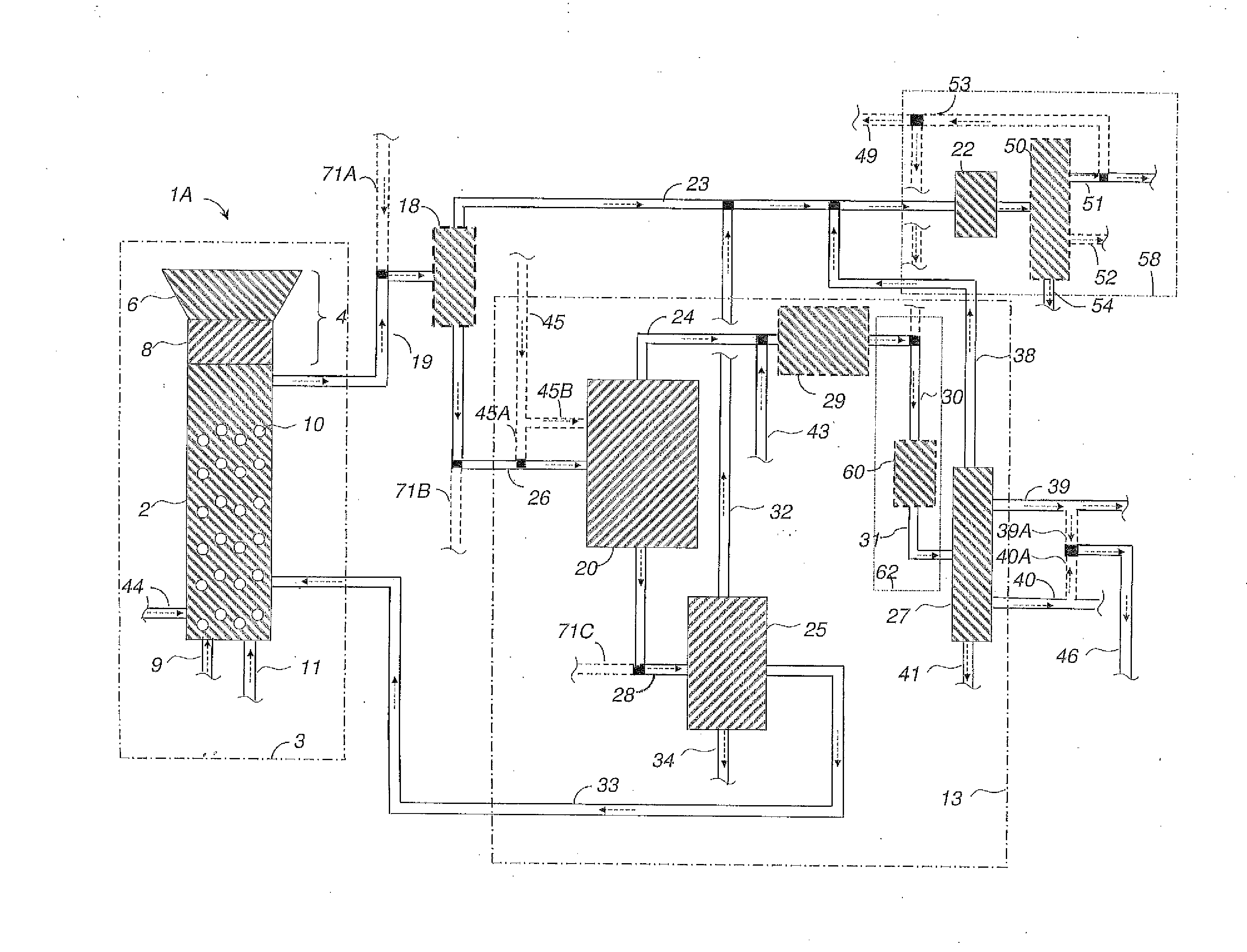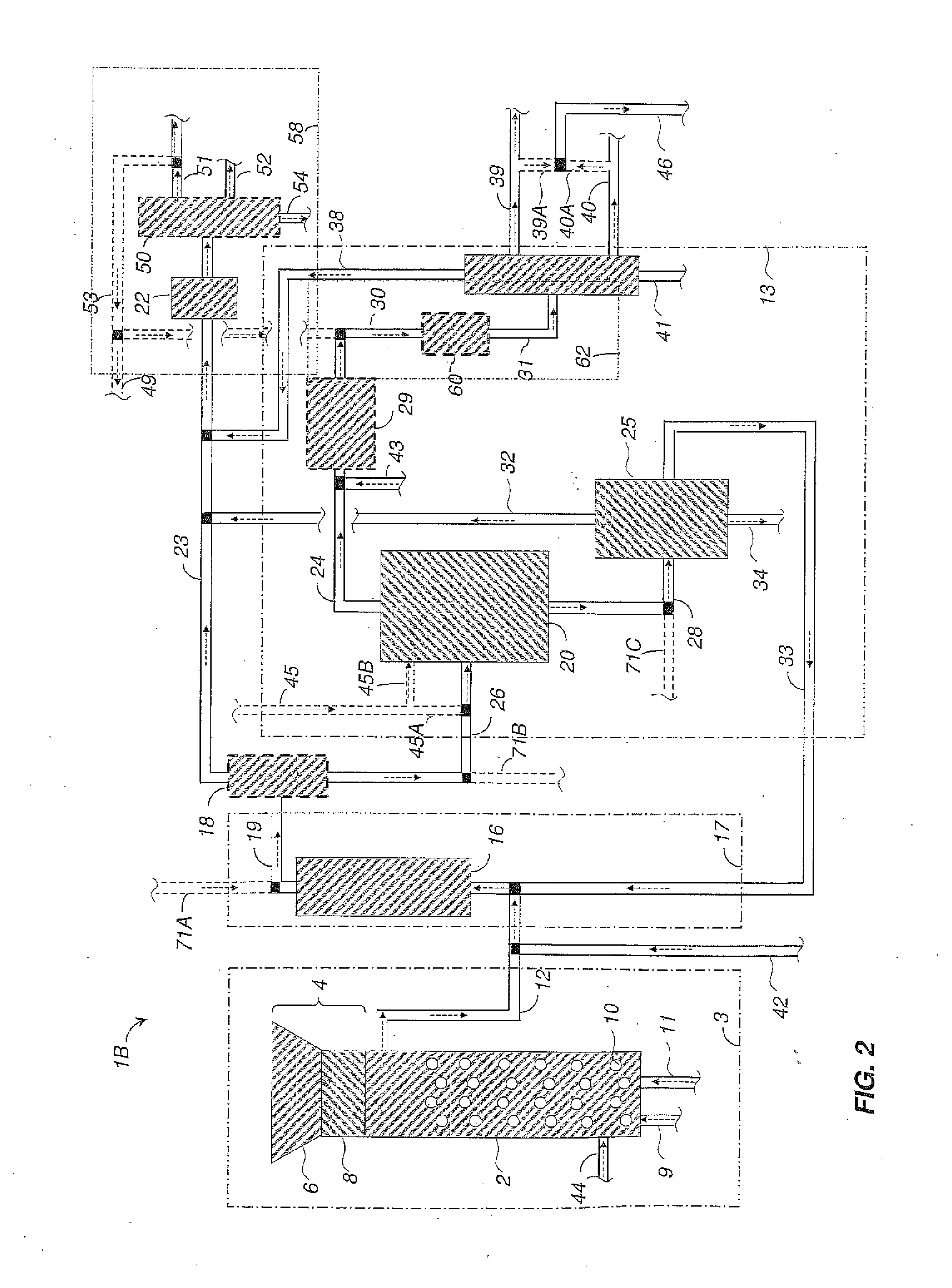Methods and systems for processing cellulosic biomass
a cellulosic biomass and solids technology, applied in the direction of liquid gas reaction process, chemical/physical/physicochemical stationary reactor, purification/separation of oxygen compounds, etc., can solve the problems of difficult recovery of various compounds from cellulosic biomass products, and achieve adequate product separation, reduce steam stripping effect, and improve product separation
- Summary
- Abstract
- Description
- Claims
- Application Information
AI Technical Summary
Benefits of technology
Problems solved by technology
Method used
Image
Examples
example 1
Acid Formation During Digestion Reaction
[0166]A solvent mixture was prepared from 10.0 grams of tetrahydrofuran and 45.0 grams of deionized water. A 100-milliliter Parr 4590 series reactor was charged with the solvent mixture, and 3.07 grams of Raney Cobalt 2724 catalyst (WR Grace) containing residual NaOH base. The reactor was then charged with a nominal 3.04 grams of southern pine mini-chips (10% moisture), of nominal size 3×5×5 mm in dimension, before pressuring with 35 bar of hydrogen, and heating with stirring to 190° C. for 1 hour, followed by heating to 245° C. for 4 hours.
[0167]pH after a single cycle of wood addition was 5.63. An additional charge of 3.08 grams of 10% wet wood was added for a second reaction cycle. A pH of 5.59 was measured for the aqueous product at the end of cycle #2.
[0168]3.00 grams of wood were added for cycle #3, at the end of which a pH of 4.99 was measured. 0.09 grams of KOH were added to bring the pH to 5.44, before addition of 3.02 grams of 10% we...
example 2
Liquid Extraction of Neutralized Aqueous Acid Solution
[0174]A model reaction mixture was prepared via addition of 2.52 grams of ethanol, 5.01 grams of 1-propanol, 2.52 grams of ethylene glycol, 5.04 grams of 1,2-propylene glycol, 1.86-grams of cresol to 233.10 grams of deionized water.
[0175]1.40 grams of glacial acetic acid (98% purity) were added to 200.07 grams of the mixture to obtain a pH of 2.99. 10.09 grams of 1N KOH were added to neutralize the mixture to pH 5.13, simulating intermediate product from the digestion and hydrodeoxygenation reaction of biomass.
[0176]7.05 grams of the resulting mixture were extracted with 7.09 grams of n-octanol. Upper and lower layers were analyzed by anion chromatographic method for acetate anion. 0.525 g / kg of acetate anion were present in the upper octanol extractant layer. 5.947 g / kg remained in then aqueous lower layer.
[0177]GC analysis was used to assess the partitioning of model components between upper and lower phase. Partition coefficie...
example 3
Re-Acidification Via Soluble Acid and Extraction
[0179]50-grams of the neutralized model digester intermediate product were acidified by adding 3.79 grams of 1N hydrochloric acid, with mixing. 7.00 grams were extracted with 7.07 grams of n-octanol with vigorous shaking, followed by overnight phase separation.
[0180]The concentration of acetate anion observed in the upper layer octanol extract was 1650 ppm, relative to 3767 ppm remaining in the aqueous layer. GC analysis of upper and lower layers revealed little change in the composition of other components.
[0181]This result shows an ability to extract free organic acid after reacidifying from basic solution using soluble acid. Separation of acid from octanol extractant followed by recycle of octanol can provide a basis for recovery of acid for condensation to biofuels product.
PUM
| Property | Measurement | Unit |
|---|---|---|
| Fraction | aaaaa | aaaaa |
| Phase separation | aaaaa | aaaaa |
| Acidity | aaaaa | aaaaa |
Abstract
Description
Claims
Application Information
 Login to View More
Login to View More - R&D
- Intellectual Property
- Life Sciences
- Materials
- Tech Scout
- Unparalleled Data Quality
- Higher Quality Content
- 60% Fewer Hallucinations
Browse by: Latest US Patents, China's latest patents, Technical Efficacy Thesaurus, Application Domain, Technology Topic, Popular Technical Reports.
© 2025 PatSnap. All rights reserved.Legal|Privacy policy|Modern Slavery Act Transparency Statement|Sitemap|About US| Contact US: help@patsnap.com



